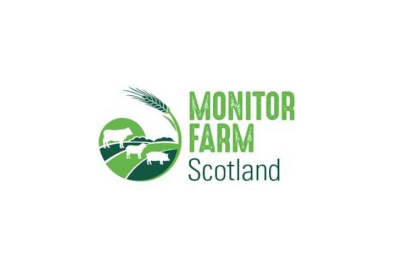
Monitor Farm Programme Brings Shetland Community Together

The ability to draw on the support of industry experts and the Shetland Islands farming community, has been the main benefit of the Monitor Farm programme for Kirsty and Aimee Budge.
“It’s given us tonnes of support and helped with how we make business decisions,” said Aimee at the recent final meeting of the three-year programme. “The Monitor Farm Programme has made us look at our costs in greater detail and how we can reduce them so our business is more profitable.”
Kirsty and Aimee run 350 Shetland x Cheviot ewes, 200 pure Shetland ewes and 90 Saler and Shorthorn cows at Bigton Farm. The farm is one of nine monitor farms established in Scotland as part of a joint initiative by QMS and AHDB Cereals & Oilseeds, with funding from the Scottish Government. The aim of the Monitor Farm programme is to help improve the productivity, profitability and sustainability of Scottish farming and crofting businesses.
With farmers and crofters on Shetland facing some unique challenges, coming together through regular monitor farm meetings has helped with knowledge sharing and collaboration within the community. The initiative has brought all ages of the farming and crofting community together to find solutions to tackle key issues. Through the meetings, Aimee recognised a need to support fellow young farmers on the Islands and has subsequently set up The Shetland Young Farmers Club, which now has 35 members.
Kirsty told farmers and crofters attending the final meeting at Bigton Hall that the technical support available through the monitor farms network has enabled them to make big changes.
She explained how the pair have started using a plate meter to monitor grass and rotationally paddock graze, which has increased grass yields. This, together with taking on an additional 500-acre block of rented land, has allowed the business to increase suckler numbers by 20 and ewes by 310 head. This has gone hand-in-hand with starting to breed their own replacements.
At the beginning of the programme it was recognised that more needed to be done to help market smaller, traditionally lower value Shetland lambs from the Islands. The Shetland Hill Lamb Group has subsequently been set-up and lambs marketed for export to Europe for the Christmas markets. This has increased value by about £10-12/lamb.
Aimee said this developing market gave them confidence to take on the Shetland ewes as they knew they had an outlet for the pure lambs. Kirsty added: “The price was so poor before, but through this group you can add value to the product and it makes it worthwhile.”
Lambs from the crossbred flock are now sold deadweight, which has also increased returns. Selling beef direct to the consumer through a box scheme has also proved worthwhile.
Lambing losses from scanning to weaning have also reduced from 26% to 13% by grazing ewes and lambs on alternative grazing, away from cliff edges. The number of calves weaned has also increased from 81% to 93%. The aim is to increase weaning percentage further to dilute the business’s relatively high machinery costs. They’re also looking to out-winter in-calf heifers for an extra month by improving deferred grazing management.
The Budges also spoke about their involvement in a trial looking to improve barley yields on the Islands. The farm is one of a handful of barley producers on Shetland and receives significant income from selling grain in the area. Through the monitor farm programme they grew two acres of Salome barley and increased nitrogen inputs. However, having not applied a growth regulator, the crop lodged. Aimee explained that this was a learning curve and that they would trial it again this year with half the amount of nitrogen and ensure a growth regulator is applied.
Shetland Monitor Farm programme facilitator, SAC’s Graham Fraser, added: “Shetland as a whole has benefited from seeing what Bigton is doing and lots of farmers have taken bits home to give them a go. It’s helped encourage folk to be much more open about their own businesses and encouraged a much clearer exchange of ideas and experiences in Shetland.”
Local crofter, John A Abernethy, a regular attendee of the Shetland Monitor Farm meetings, told farmers and crofters attending the final meeting that the technical support available through the monitor farm network has enabled him to make major changes to his crofting business.
John commented: “The expertise we have been able to tap into through the programme has given us the confidence to go ahead and try new things.”
In 2019 John decided to change his system entirely, selling off his cross ewes and switching to Shetland ewes. He went out and bought hill ewes in the autumn of 2019 that were smaller, at an average of 35kgs.
Without the cross ewes there is a much-reduced demand for winter fodder and John is aiming to reduce the silage area from 11.1ha down to 2ha. This will cut his winter fodder from around 200 bales in an average year, to around 50 bales in future. This, combined with rotational grazing introduced in 2018 through advice gained from the Monitor Farm programme, will reduce his winter fodder costs from around £8,000 down to around £2,000.
“Communication and discussion at the Shetland monitor farm meetings has encouraged all participants to be much more open about their business,” added John

